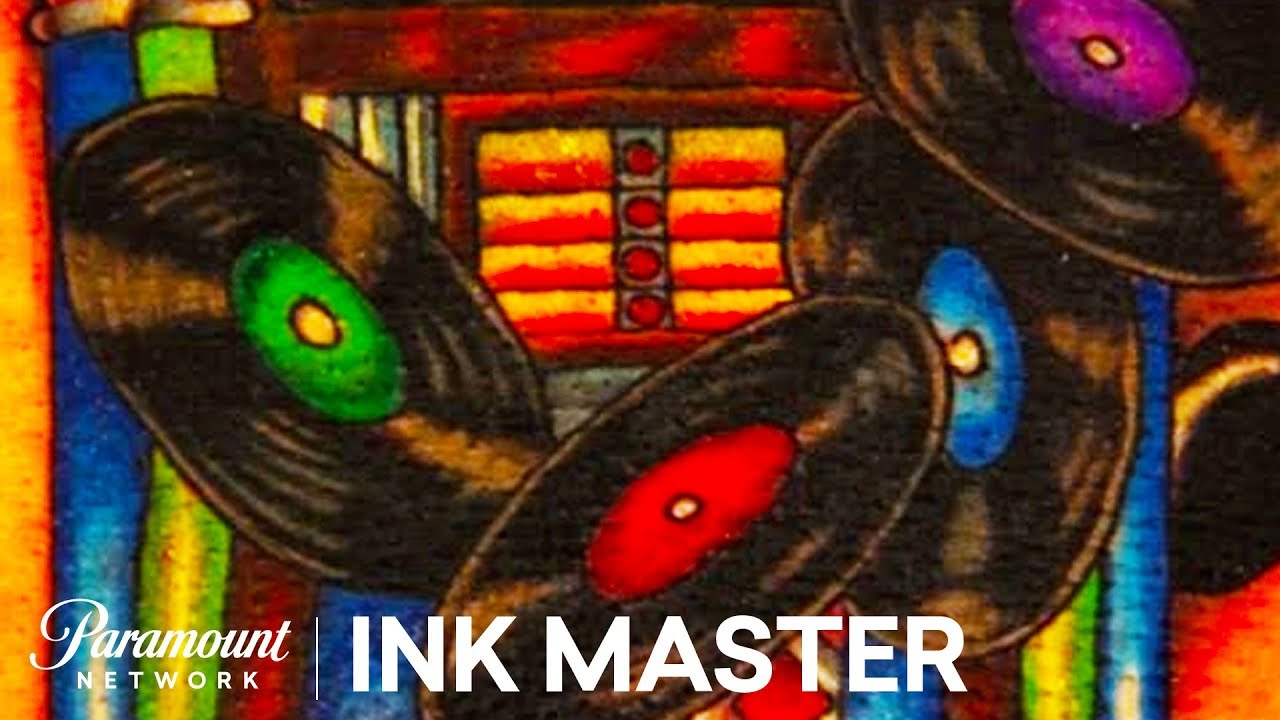The Evolution of the Tramp Stamp: From Stigma to Empowerment
Create your own unique tattoos and art for your home
Have you ever wondered about the stories behind tattoos? The phrase “tramp stamp” hit the scene in the late ’90s, giving lower back tattoos a hard time. But this blog will show how what once was a label of shame is now worn as a badge of pride and power.
Keep reading to see how ink on skin can rewrite history.
Key Takeaways
- The derogatory term “tramp stamp” was once associated with negative stereotypes and stigmas, but it is now being embraced as a symbol of empowerment and rebellion against patriarchy.
- Lower-back tattoos, once stigmatized, have evolved to become symbols of pride, self-expression, and individuality.
- Modern tramp stamps feature diverse designs and placements that reflect personal significance while reclaiming body art as a form of feminism and self-expression.
The History and Perception of Lower-Back Tattoos
The term “tramp stamp” originated in the early 2000s and was often associated with negative stereotypes and stigmas. Lower-back tattoos were seen as erotic or promiscuous, influenced by media portrayal and celebrity trends.
Origins of the term “tramp stamp”
In the late 1990s, lower-back tattoos gained a derogatory nickname: “tramp stamp.” This label arose without clear reasons but carried heavy negative connotations. It suggested that women with such tattoos were promiscuous or seeking attention in inappropriate ways.
Lower-back tattoo designs quickly became synonymous with this unwelcome stereotype.
Despite its stigma, the tramp stamp soared in popularity during the early 2000s. Female celebrities showcased their lower-back ink, influencing fans to embrace the trend as well. Yet as it became more mainstream, the backlash against these tattoos grew stronger, reinforcing prejudiced views about women’s sexuality and body autonomy.
Over time, however, perspectives began to shift—the once stigmatized “tramp stamp” started its journey towards reclamation and empowerment.
Stereotypes and stigmas attached to lower-back tattoos
The derogatory term “tramp stamp” gained popularity in the late 1990s, attaching negative connotations to lower-back tattoos. These body art pieces were stigmatized and associated with erotic appeal, leading to a societal perception of promiscuity for individuals who had them.
The tramp stamp became a symbol of shame and was frowned upon due to prevailing beauty standards and societal norms that linked it to female sexuality. However, this stigma is being challenged as people now embrace lower-back tattoos as a form of self-expression and empowerment, reclaiming their bodies from the oppressive stereotypes attached to the placement.
The shift in perceptions surrounding tramp stamps reflects changing attitudes toward female sexuality and body art. When once seen as symbols of sexual stigma, lower back tattoos are now celebrated as beautiful forms of self-expression—a testament to individuality that challenges traditional stereotypes.
This reclamation enables individuals to redefine the meaning behind their body modifications without fear of judgment or labels while embracing autonomy in choosing their own tattoos.
Influence of celebrities and media on the popularity of tramp stamps
The derogatory term “tramp stamp” gained traction in the late 1990s, primarily due to its association with lower-back tattoos. As celebrities and media embraced this trend, it led to a surge in popularity of tramp stamps.
The visibility of these tattoos on famous personalities further normalized the once-stigmatized body art, influencing its acceptance among the general public.
Fashion magazines, red carpet events, and music videos showcased prominent figures proudly displaying their lower-back tattoos, contributing to a shift in perception. This exposure resulted in lower-back tattoos being viewed as an appealing and fashionable choice for self-expression rather than a symbol laden with negative connotations.
Reclaiming the Tramp Stamp: How Gen Z is Empowering the Tattoo
Gen Z is reclaiming the tramp stamp as a symbol of empowerment and rebellion against patriarchy, transforming it from a mark of shame to one of pride. The evolution of the tramp stamp reflects a shift in societal attitudes towards body ink and self-expression.
Gen Z’s embracing of the tramp stamp as a symbol of empowerment and rebellion against patriarchy
The tramp stamp is now seen as a symbol of empowerment and rebellion against patriarchy, with Gen Z leading the way in reclaiming its meaning. Lower back tattoos were once stigmatized and labeled as “tramp stamps,” but now they are being embraced as a form of self-expression and autonomy.
This shift challenges negative stereotypes and celebrates individuality, reflecting changing perceptions of female sexuality and body art.
As the tramp stamp gains new significance in empowering individuals, it also creates space for breaking free from societal labels associated with lower-back tattoos while redefining their purpose beyond old-fashioned stigmas.
The evolution of the tramp stamp from a symbol of shame to one of pride
Lower back tattoos, often stigmatized as “tramp stamps,” have undergone a remarkable transformation. Once associated with negative connotations and judgment, these tattoos are now becoming symbols of pride and self-expression.
People are reclaiming the placement as an assertion of autonomy and challenging stereotypes about body art.
As perceptions shift, lower back tattoos are being embraced as beautiful and empowering expressions of individuality. The evolution from shame to pride reflects changing attitudes towards female sexuality and body art.
OG “Tramp Stampers” Speak Up
Hear from women who got lower-back tattoos in the early 2000s and how their perspectives on tramp stamps have evolved over time. Their experiences offer insight into the changing perception of this once-stigmatized body art.
Opinions and experiences of women with lower-back tattoos from the 2000s
During the 2000s, women with lower-back tattoos faced negative stigmas and stereotypes. Many felt judged and labeled due to their choice of body art. However, over time, their perceptions shifted, and they began embracing their tattoos as a form of self-expression and personal empowerment.
- Some women with lower – back tattoos from the 2000s initially felt pressured to cover up their tramp stamps due to societal judgment.
- Others experienced discrimination and stereotyping based on their tattoos, feeling marginalized and misunderstood.
- Despite the negativity, some women found pride in their lower – back tattoos, viewing them as symbols of independence and defiance against societal norms.
- Over time, many of these women have come to see their tramp stamps as beautiful expressions of individuality rather than symbols of shame.
- As attitudes toward body art evolve, these women are reclaiming the narrative around lower-back tattoos, reshaping how they perceive themselves and their ink.
- Today, many women who once felt stigmatized are embracing their tramp stamps with confidence, defying outdated notions about this particular style of body art.
- These women’s experiences reflect a larger shift in society’s perception of lower – back tattoos from being stigmatized to being celebrated for their beauty and personal significance.
How their perception of the tramp stamp has changed over time
Since the early 2000s, women with lower-back tattoos have witnessed a significant shift in how their tramp stamps are perceived. Initially associated with negative stereotypes and judgment, individuals who once bore these tattoos have experienced a remarkable evolution of thought surrounding their body art.
Over time, many women with lower-back tattoos have transitioned from feeling shame and stigma to embracing empowerment and self-expression through reclaiming this once-stigmatized form of body art.
The change in perception has been marked by a growing movement that challenges old stereotypes and celebrates individuality, ultimately transforming the tramp stamp into an emblem of personal autonomy and pride.
The women who had previously felt judged for their lower-back tattoos now find themselves part of a cultural shift that embraces self-expression without fear of labels or societal norms.
The Tramp Stamp of the Modern Era
Modern tramp stamps have evolved to include more diverse designs and placements, with individuals choosing tattoos that hold personal significance. Celebrities continue to influence popular tattoo trends, showcasing the empowering nature of lower-back tattoos in the modern era.
Designs and placements of tramp stamps in the 2020s
Tattoo designs for tramp stamps in the 2020s range from intricate Celtic symbols to floral patterns and meaningful quotes. Many individuals are choosing smaller, more discreet designs that complement the natural curves of the lower back.
Some popular placements include just above the tailbone or centered in the lower-back area, allowing for personal expression while still maintaining a sense of elegance in design and placement.
Celebrities like Rihanna and Megan Fox have been seen sporting modern tramp stamps, contributing to their resurgence in popularity. This trend reflects a shift towards reclaiming body art as a form of self-expression and empowerment.
Examples of celebrities and individuals with modern tramp stamp tattoos
Embracing the trend of lower-back tattoos, modern celebrities and individuals are proudly showcasing their tramp stamps as a form of self-expression. Celebrities such as Megan Fox, Britney Spears, and Angelina Jolie have popularized this placement with unique designs that reflect empowerment and individuality.
In addition to celebrities, many everyday people are choosing to adorn their lower backs with meaningful symbols or intricate artwork, reclaiming the once-stigmatized tramp stamp as a beautiful and empowering form of body art.
Inspired by influential figures and empowered by shifting perceptions, individuals from all walks of life are confidently wearing their modern tramp stamp tattoos as a testament to embracing their autonomy and celebrating their bodies.
Breaking Stereotypes and Embracing Individuality
Empowering women to choose their own tattoos without fear of judgement or labels. Disproving negative stereotypes attached to lower-back tattoos and celebrating the individuality and self-expression that comes with body art.
Empowering women to choose their own tattoos without fear of judgement or labels
Women today are embracing the freedom to choose tattoos, including lower back designs, without worrying about societal judgment or labels. This shift reflects a broader movement toward self-expression and body autonomy, allowing individuals to reclaim ownership of their bodies.
With the evolution of tramp stamps from stigmatized body art to symbols of empowerment and rebellion against patriarchy, women are disapproving negative stereotypes attached to lower-back tattoos by proudly expressing themselves through this form of body modification.
Allowing women to make their own choices about their tattoo placements enables them to challenge traditional norms and embrace individuality on their terms. By redefining the meaning behind tramp stamps from sexual stigma to self-expression, modern society is breaking stereotypes and celebrating lower back tattoos as beautiful forms of body art that empower women in owning their bodies and showcasing their uniqueness.
Disproving negative stereotypes attached to lower-back tattoos
Empowering women to choose their own tattoos without fear of judgment or labels has played a significant role in disproving negative stereotypes attached to lower-back tattoos. As people reclaim the tramp stamp as a symbol of empowerment, they are challenging the outdated and unfair assumptions about individuals with lower-back tattoos.
The shift in perception is evident as more individuals proudly display their lower-back designs, embracing self-expression and individuality while breaking free from societal expectations.
The resurgence of lower back tattoos illustrates a defiance against stigmatization and allows individuals to redefine the narrative surrounding this once-maligned art form. This movement empowers people to embrace their bodies on their terms, highlighting the evolving attitudes towards body art and encouraging others to challenge preconceived notions about tramp stamps.
Conclusion
In conclusion, the tramp stamp has transformed from a symbol of shame to one of empowerment, challenging negative stereotypes and reclaiming individuality. Individuals are embracing lower-back tattoos as a form of self-expression and autonomy, breaking free from societal judgments.
The evolution of the tramp stamp reflects shifting perceptions of female sexuality and body art, empowering women to choose their own tattoos without fear of stigma. The resurgence of lower back tattoos signifies a triumph over derogatory labels, allowing individuals to redefine the meaning behind this form of body art.
FAQs
1. What is the evolution of the tramp stamp?
The term “tramp stamp” refers to a lower back tattoo, which has evolved from a stigmatized stereotype to an empowering form of self-expression and reclaimed body ink.
2. How have lower back tattoo designs changed over time?
Lower back tattoo designs have become more varied and intricate, including Celtic symbol tattoos and feminist tattoos that reflect personal beliefs or celebrate famous celebrity-inspired body art.
3. Why are people reclaiming the tramp stamp as a positive thing?
Many individuals are reclaiming tramp stamps by choosing meaningful designs that express their identity, pushing against outdated stereotypes about stereotyped body modifications.
4. Can anyone get a lower back tattoo without stigma now?
While some stigma may still exist, there’s been significant progress in recognizing all tattoos, including lower back ones, as valid forms of artistic self-expression rather than negative labels.





